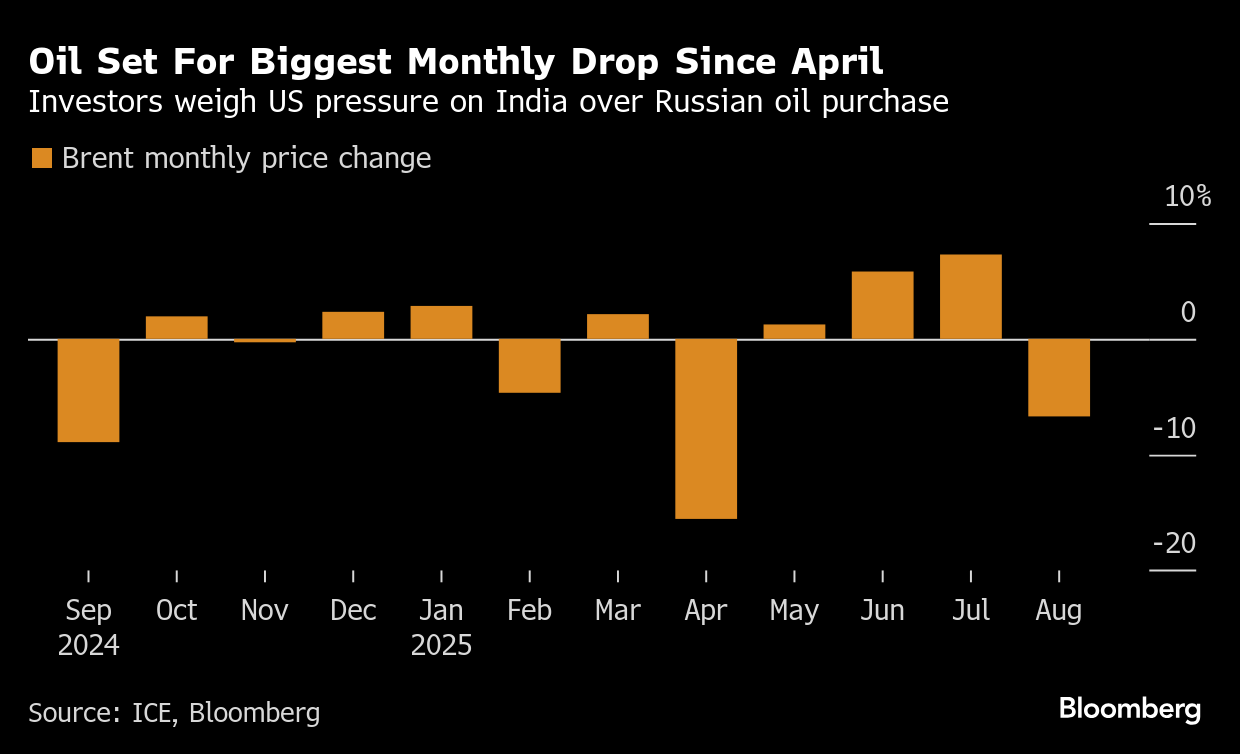Oil Drops Even as US Raises Pressure on India Over Russian Crude
(Bloomberg) -- Oil fell as traders looked past US efforts to force India to quit buying Russian crude, and market watchers highlighted the risk of a surplus forming in the coming months as global supply may run ahead of demand.
Global benchmark Brent dropped below $68 a barrel, while West Texas Intermediate was near $64. White House trade adviser Peter Navarro stepped up the pressure on New Delhi to halt purchases of Russian oil after Washington doubled a levy on imports from the country to 50%. Calling Indians “arrogant,” he cast the conflict in Ukraine as “Modi’s war,” referencing the prime minister.
The White House has singled out India for its Russian crude imports, while sparing China even though that country is also a major buyer. Refiners in the South Asian nation have recently signaled that they intend to press on with the bulk of their crude purchases from Russia for October loading and beyond.

Crude has swung between gains and losses this week, with futures on course for the biggest monthly loss since April. Traders are concerned the global oil market faces a surplus in the coming quarters after OPEC+ loosened supply curbs, while nations outside the alliance also ramped up output. The US-led trade war has spurred worries that demand could face headwinds.
“The scale of the upcoming surplus means that the outlook for the market remains firmly bearish,” said Warren Patterson, head of commodities strategy at ING Groep NV. “However, clearly the key upside risk hanging over the market is the potential for tighter sanctions against Russia, along with broader secondary tariffs.”
Citigroup Inc. also threw the spotlight on expected market balances in the run to the year-end, saying in a note that Brent would average $66 a barrel this quarter and $63 in the final three months, when an “oversupply should start to exert greater impact,” according to analysts including Anthony Yuen.
Although Brent’s prompt spread remains in backwardation, a positive pattern, the closely watched metric has narrowed. The difference between its two nearest contracts was 57 cents a barrel, down from 72 cents a month ago.
In the US, a government report on Wednesday painted a mixed picture of the domestic oil market. While refinery runs were down in all regions, pulling the nationwide figure to the lowest since early July, crude stockpiles at the hub in Cushing, Oklahoma, fell for the first time in eight weeks.
©2025 Bloomberg L.P.





